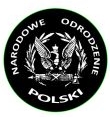CLASS 46
Now in its twelfth year, Class 46 is dedicated to European trade mark law and practice. This weblog is written by a team of enthusiasts who want to spread the word and share their thoughts with others.
Want to receive Class 46 by email?
Click here subscribe for free.
Click here subscribe for free.
Who we all are...
MONDAY, 21 MAY 2012
Branding of political parties
 Branding and symbols of political parties together with issues relating to hate and freedom of speech in the context of constitutional principles probably had never been discussed on this website, so this Class 46 member allowed himself to write a short story about a very interesting case.
Branding and symbols of political parties together with issues relating to hate and freedom of speech in the context of constitutional principles probably had never been discussed on this website, so this Class 46 member allowed himself to write a short story about a very interesting case.
On 18 December 2009, the National Rebirth of Poland (NOP), a nationalist political party, requested the District Court in Warsaw to enter changes in the Register of Political Parties (RPP) with regard to address and its members, and to register new additional figurative symbols associated with this party. The Court had doubts, whether applied symbols were consistent with the principles of the Polish Constitution which say that the existence of political parties and other organizations whose programmes are based upon totalitarian methods and the modes of activity of Nazism, fascism and communism, as well as those whose programmes or activities sanction racial or national hatred, the application of violence for the purpose of obtaining power or to influence the State policy, or provide for the secrecy of their own structure or membership, should be prohibited. The District Court requested the Polish Constitutional Tribunal to examine whether goals, rules and activities of the NOP that are resulting from the change of symbols, are in accordance with the Constitution.
 The Constitutional Tribunal in its order of 6 April 2011 case file Pp 1/10 discontinued the proceedings, and ruled that it cannot decide on the merits of the case, because there was lack of evidence, and the District Court was required to examine if the applied signs contain fascist symbolism. However, the Tribunal emphasized that such circumstances cannot be presumed, because of the constitutional guarantees of freedom of association and freedom of expression and speech.
The Constitutional Tribunal in its order of 6 April 2011 case file Pp 1/10 discontinued the proceedings, and ruled that it cannot decide on the merits of the case, because there was lack of evidence, and the District Court was required to examine if the applied signs contain fascist symbolism. However, the Tribunal emphasized that such circumstances cannot be presumed, because of the constitutional guarantees of freedom of association and freedom of expression and speech.
 The District Court was bound by the interpretation, and therefore requested the additional materials, together with the expert opinions on whether applied signs contain clear symbolic that is racist, totalitarian, fascist or Nazi. The linguist and historian experts issued an opinion in which they declared that the symbol of the crowned eagle with a cross, with the lictors' rods and ax, was first seen in the Ancient Rome, and this symbol does not involve a specific message. The party emphasizes a strong role of state and refers to the Imprerium Romanum. Fasces are only a small part of the whole symbol, so as such it has quite a different meaning. For instance, fasces are included in the modern coat of arms of France and USA. It would be difficult to accuse both states of promoting fascism. The Celtic cross symbolized the sun, but it was also accepted by the Church as one of the cross symbols, and by choosing this symbol, NOP refers to the Slavic, and even Catholic and Polish and National themes. The experts noted that the symbol stylized as a road sign indicates the prohibition of homosexual acts in public places, which is consistent with generally accepted morality. The Court repeated after the experts that it would be too social sensed to look for additional symbolic and meanings. Experts said that the sign is just tasteless and vulgar and violates the principles of etiquette, but it does not promote any prohibited content. The symbol of the Cross and Sword is the signs associated with the Knightly Order of the Cross and the Sword - Polish secret organization of Catholic and moral values, established at the end of the Second Polish Republic and active at the first years of German occupation. Experts decided that all the sign act as self-identification of members of a political party rather than promote illegal content.
The District Court was bound by the interpretation, and therefore requested the additional materials, together with the expert opinions on whether applied signs contain clear symbolic that is racist, totalitarian, fascist or Nazi. The linguist and historian experts issued an opinion in which they declared that the symbol of the crowned eagle with a cross, with the lictors' rods and ax, was first seen in the Ancient Rome, and this symbol does not involve a specific message. The party emphasizes a strong role of state and refers to the Imprerium Romanum. Fasces are only a small part of the whole symbol, so as such it has quite a different meaning. For instance, fasces are included in the modern coat of arms of France and USA. It would be difficult to accuse both states of promoting fascism. The Celtic cross symbolized the sun, but it was also accepted by the Church as one of the cross symbols, and by choosing this symbol, NOP refers to the Slavic, and even Catholic and Polish and National themes. The experts noted that the symbol stylized as a road sign indicates the prohibition of homosexual acts in public places, which is consistent with generally accepted morality. The Court repeated after the experts that it would be too social sensed to look for additional symbolic and meanings. Experts said that the sign is just tasteless and vulgar and violates the principles of etiquette, but it does not promote any prohibited content. The symbol of the Cross and Sword is the signs associated with the Knightly Order of the Cross and the Sword - Polish secret organization of Catholic and moral values, established at the end of the Second Polish Republic and active at the first years of German occupation. Experts decided that all the sign act as self-identification of members of a political party rather than promote illegal content.
 The District Court in Warsaw in its order of 25 October 2011 case file VIII Ns Rej Ew Pzm 77/09 did not find any legal obstacles to register all the applied signs. Professor Irena Lipowicz, the Polish Ombudsman, and the District Prosecutor Office in Warsaw both appealed. The Ombudsman argued, inter alia, that the expert opinion was not clear, coherent and complete. The Prosecutor noted that there were procedural issues. Prof. Lipowicz argued that the Polish Act on Political Parties provides that a party is allowed to apply and register only one graphic/figurative element that would serve as the identification symbol for its voters, analogously as consumers of commercial products available on the market. Such a symbol will acquire protection similar to this afforded for personal interests. Granting of such legal protection, which does not serve as an identification of a political party, but is the manifestation of expression on other participants in social life, would lead to blockage of public debate. Such protection would also have a chilling effect on freedom of speech.
The District Court in Warsaw in its order of 25 October 2011 case file VIII Ns Rej Ew Pzm 77/09 did not find any legal obstacles to register all the applied signs. Professor Irena Lipowicz, the Polish Ombudsman, and the District Prosecutor Office in Warsaw both appealed. The Ombudsman argued, inter alia, that the expert opinion was not clear, coherent and complete. The Prosecutor noted that there were procedural issues. Prof. Lipowicz argued that the Polish Act on Political Parties provides that a party is allowed to apply and register only one graphic/figurative element that would serve as the identification symbol for its voters, analogously as consumers of commercial products available on the market. Such a symbol will acquire protection similar to this afforded for personal interests. Granting of such legal protection, which does not serve as an identification of a political party, but is the manifestation of expression on other participants in social life, would lead to blockage of public debate. Such protection would also have a chilling effect on freedom of speech.
The Appellate Court in Warsaw decided that a political party cannot register more than one graphic symbol. The District Court in its order of 17 April 2012 ruled that it cannot enter additional symbols into the Register of Political Parties because NOP has already registered a number of other signs such as the so-called phalanx (the symbol of a hand with sword), and their excess would impede the statutory requirement of the recognition of the political party. Undoubtedly, these judgments met with strong criticism because of the lack of a clear opinion on hate speech. Basing the decision on the argument for the registration of only one symbol was somehow an "escape" by the Courts to decide on the most important principles of a democratic state. Posted by: Tomasz Rychlicki @ 09.07
Tags: branding, Constitutional Tribunal, party, freedom of speech, hate speech,


 Sharing on Social Media? Use the link below...
Sharing on Social Media? Use the link below...
Perm-A-Link: https://www.marques.org/blogs/class46?XID=BHA2838
Branding of political parties
On 18 December 2009, the National Rebirth of Poland (NOP), a nationalist political party, requested the District Court in Warsaw to enter changes in the Register of Political Parties (RPP) with regard to address and its members, and to register new additional figurative symbols associated with this party. The Court had doubts, whether applied symbols were consistent with the principles of the Polish Constitution which say that the existence of political parties and other organizations whose programmes are based upon totalitarian methods and the modes of activity of Nazism, fascism and communism, as well as those whose programmes or activities sanction racial or national hatred, the application of violence for the purpose of obtaining power or to influence the State policy, or provide for the secrecy of their own structure or membership, should be prohibited. The District Court requested the Polish Constitutional Tribunal to examine whether goals, rules and activities of the NOP that are resulting from the change of symbols, are in accordance with the Constitution.
The Appellate Court in Warsaw decided that a political party cannot register more than one graphic symbol. The District Court in its order of 17 April 2012 ruled that it cannot enter additional symbols into the Register of Political Parties because NOP has already registered a number of other signs such as the so-called phalanx (the symbol of a hand with sword), and their excess would impede the statutory requirement of the recognition of the political party. Undoubtedly, these judgments met with strong criticism because of the lack of a clear opinion on hate speech. Basing the decision on the argument for the registration of only one symbol was somehow an "escape" by the Courts to decide on the most important principles of a democratic state. Posted by: Tomasz Rychlicki @ 09.07
Tags: branding, Constitutional Tribunal, party, freedom of speech, hate speech,


 Sharing on Social Media? Use the link below...
Sharing on Social Media? Use the link below...Perm-A-Link: https://www.marques.org/blogs/class46?XID=BHA2838
Reader Comments: 0
Post a Comment
MARQUES does not guarantee the accuracy of the information in this blog. The views are those of the individual contributors and do not necessarily reflect those of MARQUES. Seek professional advice before action on any information included here.
The Class 46 Archive

